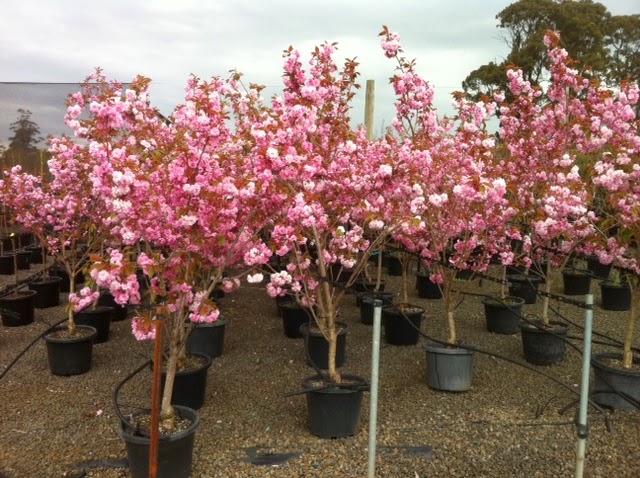|
|
 |
| Prunus serrulata - Japanese Cherry |
It is a small deciduous tree with a short single trunk, with a dense crown. It grows 8–12 m (26–40 ft). The smooth bark is chestnut-brown, with prominent horizontal lenticels. The leaves are arranged alternately, simple, ovate-lanceolate. Every leaf is 5–13 cm long and 2.5–6.5 cm broad, with a short petiole and a serrate or doubly serrate margin. At the end of autumn, the green leaves turn yellow or red.
The flower of the P. serrulata is the main attraction. When bloom they are looking so beautiful. It blooms pink flowers in spring. The flowers are produced in racemose clusters of two to five together at nodes on short spurs in spring at the same time as the new leaves appear; with five petals in the wild type tree. The people of Japan, Korea and China celebrate the Cherry Blossom Festival when they full blooms in Spring. The fruit is a globose black drupe 8–10 mm diameter. Prunus serrulata is widely grown as a flowering ornamental tree, both in its native countries and throughout the temperate regions of the world. In cultivation in Europe and North America, it is usually grafted on to Prunus avium roots; the cultivated forms rarely bear fruit. It is viewed as part of the Japanese custom of Hanami.
The National Cherry Blossom Festival is a spring celebration in Washington, D.C., commemorating the 1912 gift of Prunus serrulata Japanese cherry trees from Tokyo to the city of Washington. They are planted in the Tidal Basin park. P. serrulata is manly cultivates as a flowering tree. People plant it in their garden or in the Park as ornamental Tree.
 |
| Japanese Cherry |
 |
| Japanese Cherry Leaves |
 |
| Leaves of Cherry Blossom |
 |
| Japanese Cherry Flowers |
 |
| Flowers of Cherry Blossom |
 |
| Japanese Cherry Fruits |
 |
| Fruits of Japanese Cherry |
 |
| Japanese Cherry Bark |
 |
| Japanese Cherry Bark |
 |
| Japanese Cherry leaves in Fall |
 |
| Cherry Blossom as Ornamental Plant |
 |
| Japanese Cherry |
 |
| Japanese Cherry in tub |
 |
| Japanese Cherry as ornamental tree |
No comments:
Post a Comment